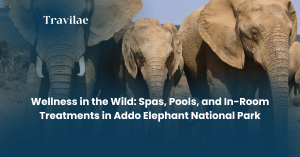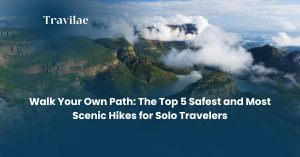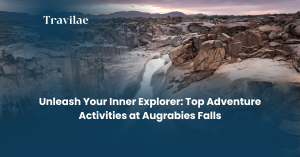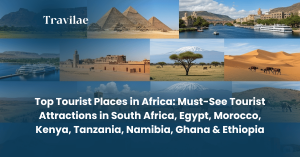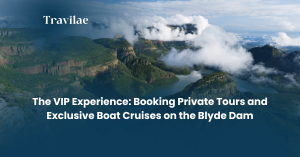Did you know AfrikaBurn transforms a remote patch of South Africa’s Tankwa Karoo desert into a surreal, temporary city filled with massive wooden sculptures, interactive art, and a vibrant community of thousands? Every year, this radical gathering draws adventurers, artists, and dreamers for a week-long celebration of creativity, self-expression, and communal living—where exploring by bike or on foot is part of the magic. In this guide, discover how to embrace AfrikaBurn’s spirit by cycling or hiking across the playa, uncovering art installations, and making the most of your desert adventure.
Table of Contents
Best Time to Visit
AfrikaBurn takes place annually, typically in late April or early May, when the Karoo’s extreme weather is most manageable. Days are warm but not scorching, and nights can be chilly, so pack accordingly. The festival lasts a week, but arriving early offers a calmer, more intimate experience as the city takes shape, while staying for the final night (the Temple Burn) is considered especially meaningful.
How to Get There & Around
Getting There:
- Location: Quaggafontein, Tankwa Karoo National Park, about 280–300 km northeast of Cape Town.
- Travel: The drive takes 4–6 hours from Cape Town. Roads become rough and remote as you approach, so plan for slow travel and double-check directions—GPS apps may mislead you on the last stretch.
- Vehicle: Most travelers arrive by car or camper van. If towing, you’ll need a special license.
Getting Around:
- On Site: Once at AfrikaBurn, cars are parked and remain stationary. The event is pedestrian and bicycle-friendly, with only registered art cars (“mutant vehicles”) allowed to roam.
- Biking: Renting or bringing a bike is highly recommended due to the vast distances between installations and camps.
- Walking: Hiking across the playa is equally rewarding, especially for those who enjoy a slower pace and spontaneous encounters.
Budget vs Luxury Travel Costs
| Expense Category | Budget (Solo) | Luxury (Couple/Group) |
|---|---|---|
| Ticket | $120–$180 | $120–$180 per person |
| Transport | $60–$120 (car share) | $300–$600 (camper van hire) |
| Accommodation | $50–$100 (tent) | $400–$800 (caravan rental) |
| Food & Water | $50–$100 (DIY) | $200–$300 (gourmet, group) |
| Bike Rental | $30–$60 | $60–$100 (upgraded bike) |
| Total (est. 5 days) | $310–$560 | $1,080–$1,980 |
Note: All costs are approximate and in USD. AfrikaBurn operates a gift economy—there’s nothing to buy except ice.
Top Things to Do
Cycling or Hiking Across the Playa
- Explore ever-changing art installations, many of which are interactive and destined to be burned at the festival’s end.
- Discover themed camps, spontaneous performances, and mutant vehicles—each offering unique interactions and surprises.
- Enjoy the stark beauty of the Karoo desert, especially at sunrise and sunset, when the light transforms the landscape.
Participate in Community & Art
- Contribute to collaborative art projects or performances—everyone is encouraged to participate.
- Attend workshops, talks, and communal meals hosted by various camps.
Experience the Temple Burn
- The final night’s Temple Burn is a sacred, emotional highlight, offering reflection and closure to the week.
Where to Stay
Budget Options:
- Bring your own tent and camping gear. Camping is first-come, first-served unless you join a theme camp.
- Choose a spot near the playa for easy access to installations, or in quieter zones for more restful nights.
Premium Options:
- Rent a caravan or camper van for extra comfort and shelter from the desert’s temperature swings.
- Some groups organize luxury camps with stretch tents, gourmet food, and private amenities (must be arranged in advance).
Local Tips, Safety, Culture, Language
- Self-Reliance: Bring all essentials—food, water, shelter, and first aid. There are no shops except for ice.
- Gift Economy: Commerce is absent; gifting and sharing are core values.
- Safety: The desert is harsh—prepare for dust, sun, and cold nights. Fire safety is critical; bring extinguishers and never leave fires unattended.
- Culture: Radical self-expression, participation, and inclusion are celebrated. Leave no trace—pack out everything you bring.
- Language: English is widely spoken, but Afrikaans and other South African languages may be heard.
Traveler Story: The Playa by Bike
“Each day, we biked through the playa, exploring the evolving art installations that transformed the central space. These vibrant, interactive pieces, destined to be burned at the week’s end, filled us with awe. Renting a bike was the best decision—without it, we’d have missed so many hidden corners and spontaneous moments of wonder.”
Sample Itinerary: 5 Days at AfrikaBurn
Day 1:
- Arrive, set up camp, orient yourself with a sunset walk or ride across the playa.
Day 2:
- Early morning bike ride to see new art installations.
- Join a communal breakfast at a themed camp.
- Afternoon workshops or performances.
Day 3:
- Explore offbeat installations on foot—seek out interactive or hidden pieces.
- Participate in a collaborative art build or parade.
Day 4:
- Attend talks or guided meditations.
- Sunset cycle to catch the best light for photos.
- Enjoy mutant vehicle rides if invited.
Day 5 (Temple Burn):
- Pack up camp, but stay for the emotional Temple Burn at night.
- Reflect and connect with fellow Burners before departure.
Travel FAQs
1. How do I get to AfrikaBurn from Cape Town?
Drive 4–6 hours northeast; follow official directions, not just GPS.
2. Can I buy food or drinks at AfrikaBurn?
No, except for ice. Bring all supplies; gifting is encouraged.
3. Is cycling necessary?
Highly recommended due to the vast area—bikes help you see more.
4. What’s the weather like?
Hot days, cold nights, and occasional strong winds—pack for all conditions.
5. Are there showers or toilets?
Basic toilets are provided; showers are DIY or solar bags.
6. Is AfrikaBurn safe for solo travelers?
Yes, if you’re prepared and self-reliant. The community is welcoming, but the environment is harsh.
7. What’s the highlight of the festival?
The Temple Burn on the final night is a deeply moving, communal experience.
Conclusion
AfrikaBurn is not just a festival—it’s a transformative adventure in one of South Africa’s most dramatic landscapes. Whether cycling or hiking across the playa, you’ll discover awe-inspiring art, radical self-expression, and a community built on creativity and connection. Ready to embrace the dust and the wonder? Share your AfrikaBurn dream or story in the comments below!

